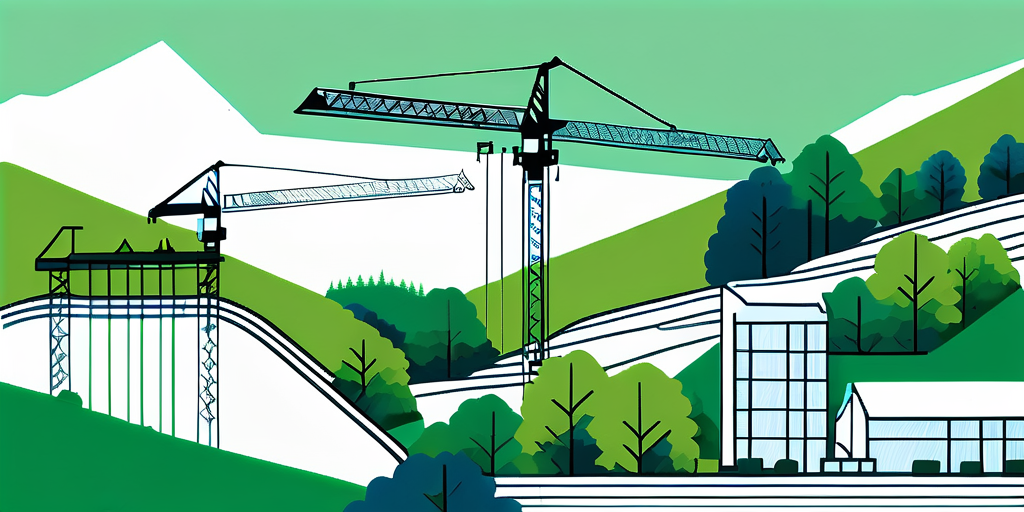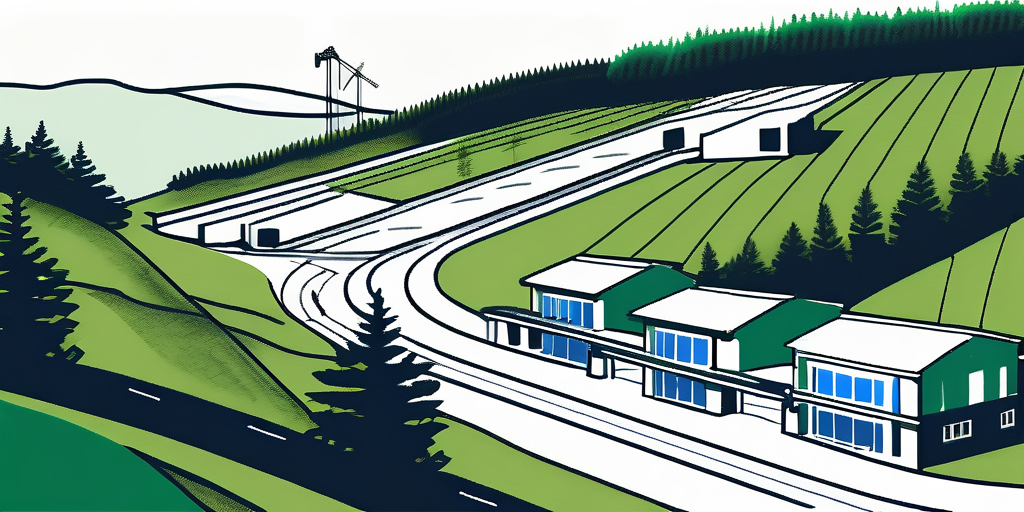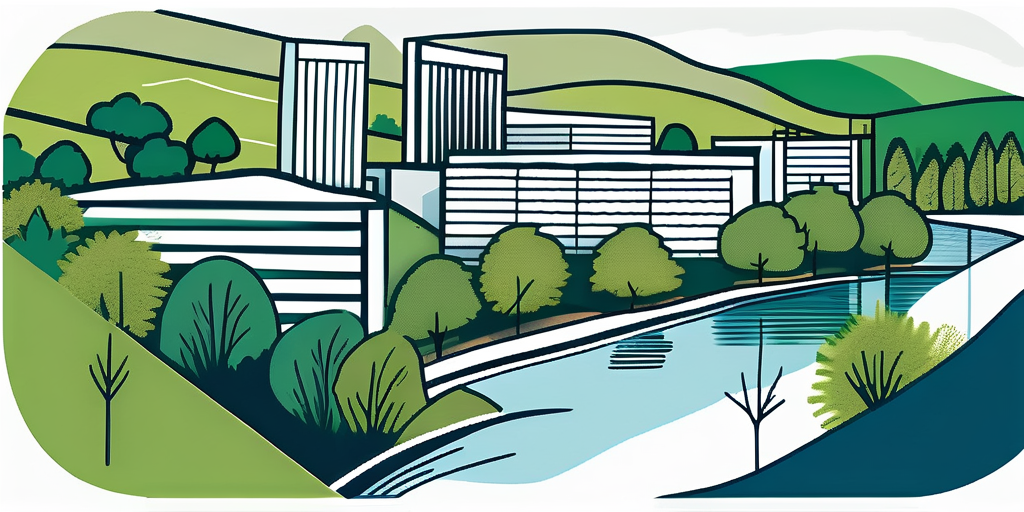
Tennessee National is an impressive community designed to take full advantage of the beautiful landscape surrounding it. The collaboration process for building within this unique locale is crucial to ensure its development aligns with the vision for the area. Through effective teamwork, innovative planning, and diligent execution, stakeholders can create a lasting impact in this vibrant community. In this article, we'll explore the various stages of collaboration in the construction process at Tennessee National.
Collaboration is a cornerstone of successful construction projects. When all parties work together harmoniously, outcomes tend to exceed expectations in terms of quality, efficiency, and lasting relationships. At Tennessee National, collaboration fosters innovation and helps mitigate risks that could derail a project. The construction industry is inherently complex, involving multiple stakeholders, each with their own objectives and constraints. By prioritizing collaboration, teams can navigate these complexities more effectively, ensuring that every voice is heard and every concern addressed.

Successful building projects hinge on the ability of diverse teams to come together. Architects, engineers, contractors, and clients must align their goals and methodologies, promoting a shared vision for the outcome. This synergy contributes to smoother workflows, timely completions, and an overall elevated experience for all involved. The integration of various disciplines not only enhances problem-solving capabilities but also fosters a culture of continuous improvement, where lessons learned from one project can be applied to future endeavors, ultimately raising the standard of excellence in construction.
Teamwork is integral to the construction process at Tennessee National. Each member of a project team brings unique expertise and perspectives, enabling the group to solve problems creatively. Effective teamwork fosters an environment where individuals feel valued and encouraged to contribute their ideas, which can lead to unforeseen innovations. This collaborative spirit is particularly crucial when facing unexpected challenges, such as supply chain disruptions or regulatory changes, as it allows teams to pivot quickly and devise alternative strategies that keep the project on track.
In many cases, a collaborative mindset empowers teams to tackle challenges head-on. Whether it’s adapting to design changes, meeting tight deadlines, or navigating logistical hurdles, a strong team is more capable of finding solutions. This adaptability allows construction projects to progress smoothly and meet the expectations of stakeholders. Furthermore, the relationships built through teamwork often extend beyond the project at hand, creating a network of professionals who can rely on one another for future ventures, thereby enhancing the overall resilience of the construction community.
Several key principles drive successful collaboration within the construction industry, especially at Tennessee National. These principles include open communication, mutual respect, and a shared commitment to the project’s vision. Emphasizing these tenets fosters a cohesive environment where ideas can flourish. Open communication not only involves sharing information but also actively listening to feedback, which can lead to more informed decision-making and a deeper understanding of each stakeholder's needs and concerns.
By adhering to these principles, teams at Tennessee National can work together effectively, resulting in successful building projects that meet or exceed expectations. Additionally, fostering a culture of collaboration can lead to enhanced safety practices on-site, as team members are more likely to communicate potential hazards and work together to implement preventative measures. This proactive approach not only protects the workforce but also contributes to the overall success of the project by minimizing delays and ensuring compliance with safety regulations.
The initial stages of the building process are critical, as they lay the foundation for the entire project. Proper planning, site evaluation, and overarching design considerations set the trajectory for success. At Tennessee National, these early phases are approached with careful thought and collaboration.

Choosing the right site is fundamental in the construction process. It involves rigorous SWOT analyses to understand the strengths, weaknesses, opportunities, and threats the location presents. Collaborative discussions among architects, environmental consultants, and city planners aid in determining the suitability of potential sites.
The evaluation phase also includes environmental assessments to ensure sustainability in building practices. Knowledge sharing among various stakeholders helps the team identify the most advantageous site that aligns with their vision for community development at Tennessee National. Additionally, considerations such as proximity to essential services, transportation access, and the potential for future growth are evaluated to ensure that the chosen site can accommodate both current and future needs of the community. This comprehensive approach not only enhances the project's viability but also promotes a harmonious integration with the surrounding environment.
Once a site is secured, the design and planning phase begins. This stage involves collaboration between architects and engineers to create designs that are not only aesthetically pleasing but also structurally sound. Effective planning considers building codes, zoning regulations, and community input, making it a multifaceted collaborative effort.
Stakeholder engagement is essential during the design process. Gathering feedback from residents and local authorities ensures the project aligns with the community's needs and fosters a sense of ownership among stakeholders, creating a more favorable environment for construction. Furthermore, the design team often incorporates innovative technologies and sustainable materials into their plans, reflecting a commitment to eco-friendly practices. By prioritizing energy efficiency and minimizing environmental impact, Tennessee National aims to set a benchmark for future developments, showcasing how modern construction can coexist with nature while enhancing the quality of life for its residents.
With site selection and design plans complete, the construction phase commences. This is where collaboration truly shines, as various teams come together to convert blueprints into reality. Effective coordination is vital to ensuring the project progresses smoothly.
In larger projects, multiple construction teams may be operating simultaneously, necessitating meticulous coordination. At Tennessee National, team leaders regularly convene to map out daily tasks, set priorities, and address potential conflicts before they escalate.
Regular meetings and updates ensure that everyone is informed of each other’s progress. This proactive communication minimizes delays and creates a collaborative spirit where teams support one another, sharing resources and expertise as needed. Additionally, the use of visual aids such as Gantt charts and progress boards during these meetings allows teams to visualize timelines and dependencies, making it easier to identify bottlenecks and adjust schedules accordingly. This level of transparency fosters trust and encourages a sense of shared ownership over the project’s success.
Quality assurance and safety are paramount during construction. Collaborative practices, such as joint safety training sessions and quality control checklists, help maintain high standards. When all teams share responsibility for safety and quality, the project not only succeeds but fosters a culture of accountability among all members.
Moreover, collaborative technologies like project management software can streamline process oversight. By utilizing shared platforms, teams can track progress and report issues in real-time, ensuring timely responses to potential hazards or quality concerns. This integration of technology not only enhances communication but also allows for data analytics to be employed, enabling teams to identify trends in safety incidents or quality lapses. Such insights can drive continuous improvement initiatives, ensuring that lessons learned are applied to future phases of the project, ultimately leading to a safer and more efficient construction environment.
The completion of construction does not signal the end of collaboration; on the contrary, it's just the beginning. Post-construction activities are vital for ensuring the project meets expectations and remains sustainable long-term.

After the project is complete, it is crucial to gather feedback from all stakeholders. This review process helps identify areas of success and opportunities for improvement. Collaborative feedback sessions bring together construction teams, clients, and residents to discuss their experiences and insights.
This ongoing dialogue not only strengthens relationships but also helps inform future projects. Implementing changes based on collective feedback reflects a commitment to continuous improvement and community satisfaction. Additionally, utilizing digital platforms for feedback collection can enhance participation, allowing stakeholders to share their thoughts at their convenience. Surveys, online forums, and social media channels can serve as effective tools to reach a broader audience, ensuring that every voice is heard and valued.
To ensure the longevity of buildings at Tennessee National, effective maintenance must be prioritized. This requires ongoing collaboration between facility managers, maintenance teams, and residents. Establishing a clear communication channel for reporting issues fosters a sense of community ownership over the property.
Regular meetings can be scheduled to assess the condition of buildings and address any arising concerns. By collaborating on upkeep, the community can maintain the quality and aesthetic appeal of Tennessee National, safeguarding its legacy for future generations. Furthermore, implementing a shared maintenance calendar can help streamline efforts, allowing residents to participate in scheduled upkeep activities, such as landscaping days or community clean-ups. This not only enhances the physical environment but also builds camaraderie among residents, creating a vibrant and engaged community that takes pride in its surroundings.
While collaboration offers numerous advantages, it is not without challenges. Recognizing potential obstacles and addressing them proactively ensures successful outcomes in collaborative construction projects.
Effective communication is essential for collaboration; however, barriers can arise due to misunderstandings, differing perspectives, or even technological issues. Establishing clear communication protocols, using simple language, and utilizing various mediums can help bridge these gaps.
Moreover, fostering an environment where team members feel comfortable expressing concerns enhances transparency. Regular feedback loops ensure that everyone’s voice is heard, which can lead to more effective problem-solving. Utilizing collaborative tools such as project management software can streamline communication and keep everyone on the same page, allowing for real-time updates and reducing the chances of miscommunication. Additionally, incorporating visual aids, such as diagrams and flowcharts, can help clarify complex ideas and ensure that all team members have a shared understanding of project goals.
Disagreements are inevitable in any collaborative process, but how teams handle conflicts defines the quality of their collaboration. Constructive conflict resolution requires open dialogue and a focus on collaborative solutions that benefit all parties.
Training team members in conflict management techniques equips them with the skills to handle disputes effectively. By focusing on shared goals and maintaining respect for differing viewpoints, teams at Tennessee National can turn potential conflicts into opportunities for growth. Furthermore, establishing a conflict resolution framework can provide a structured approach to addressing disputes, ensuring that conflicts are resolved in a timely manner. Regular team-building activities can also strengthen relationships among team members, fostering trust and camaraderie that can help mitigate the impact of conflicts when they arise. This proactive approach not only enhances team dynamics but also contributes to a more harmonious work environment.
In addition to these strategies, it is crucial to recognize the role of leadership in navigating conflicts. Leaders should model effective communication and conflict resolution behaviors, setting a tone for the team that prioritizes collaboration and mutual respect. By encouraging an open-door policy, leaders can create a safe space for team members to voice concerns before they escalate into larger issues. This proactive stance not only helps in resolving conflicts but also promotes a culture of continuous improvement, where feedback is valued and used to enhance future collaborative efforts.